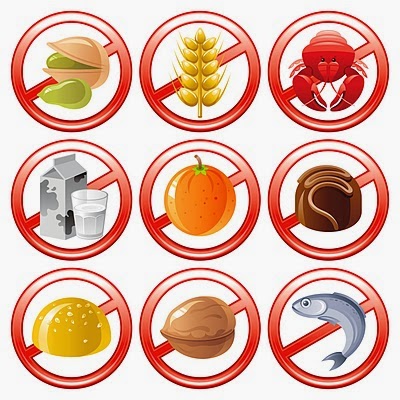What is "Nickel Free"?
I don't know about you, but "nickel free" is a confusing term. Did you know that jewelry marked nickel free is still allowed to contain a very small amount of nickel?? It is a very tiny amount, and requires extremely sensitive instruments to measure that amount, but it is there.The European Union's (EU) Nickel Directive places limits on the amount
of nickel that is released to the skin via jewelry and other products. This way of measuring is very different from the U.S. way of measuring the percentage of nickel that exists in an alloy's composition. Here are the Nickel Directive's "migration limits":
- 0.2 micrograms per cm² per week for post assemblies inserted into pierced ears and other pierced parts of the human body
- 0.5 micrograms per cm² per week for other products intended to come into direct and prolonged contact with the skin.
Great Britain (UK) has adopted the EU Nickel Directive as the country's standard. Jewelry artists and marketers must comply with the EU Nickel Directive, in order to sell products to customers in the UK or EU.
The US does not yet have a standard for allowed amounts of nickel in jewelry. If the US sets a standard, we can only hope it will be the same as the EU Nickel Directive.
What does "Hypoallergenic" mean?
"Hypoallergenic" means "below the normal level" of allergenic reactions. This name originated in the cosmetics industry in the 1950's, and the jewelry industry adopted the term soon afterwards.Sometimes we mistake the meanings of
"Hypoallergenic" and "Nickel Free"
It is easy to confuse both terms as being synonymous/the same thing. But make sure to know the difference, especially if you are allergic to nickel OR a jewelry artist.
Hypoallergenic does not mean it is nickel free. In fact, hypoallergenic has NO legal or medical definition related to jewelry.
The safest approach is to find out which specific materials are used in jewelry and cosmetics. The vague term "hypoallergenic" is not to be taken as a guarantee of materials included in the jewelry or cosmetics.
How to Shop for Jewelry
If You Have a Nickel Allergy
The best approach is to shop for jewelry that gives you a list of the products used to make it. Try to buy items that are 100% pure, containing just one type of metal. That way you are assured that nickel exposure is completely avoided. As long as the U.S. lacks a directive, search out jewelry made from the following metals:
- Niobium
- Titanium
- 304 stainless steel
- 304L stainless steel
- 430 Stainless Steel
- Argentium sterling silver
- 14K yellow gold
Information in this post came from:
http://www.rings-things.com/resources/nickel-free.html
Another great resource comes from Dermatologist.com which also points out about half of the toys in America contain nickel.
In general, I understand why the phrases "hypoallergenic" and "nickel free" originated. It mainly is an easy term that allows brief labeling to be accomplished for logos and such.
BUT those of us who are allergic to nickel or other alloys MUST make it our job to know exactly what those terms mean, and to protect ourselves from unexpected exposure.
Looking for safe jewelry that does NOT contain nickel?
Read my previous post here.























